
Contents of the page
- 1 Causes of the disease
- 2 Symptoms of osteochondrosis of the cervical spine in adults and children
- 3 Complaints and clinical picture of the disease - photo
- 4 Treatment of osteochondrosis of the cervical spine
- 5 Exercises and gymnastics( LFK)
Osteochondrosis of the cervical spine,sufficiently well studied. At the moment, most of the working population suffers from this disease. This type of osteochondrosis develops not only in the adult population, but is also often found in adolescents, the so-called juvenile osteochondrosis.
The cervical section is the most mobile part of the spine, so the load on this department is quite large. The disease develops gradually, it is characterized by frequent exacerbations, which can lead to a significant decrease in the patient's quality of life.
Causes of the disease
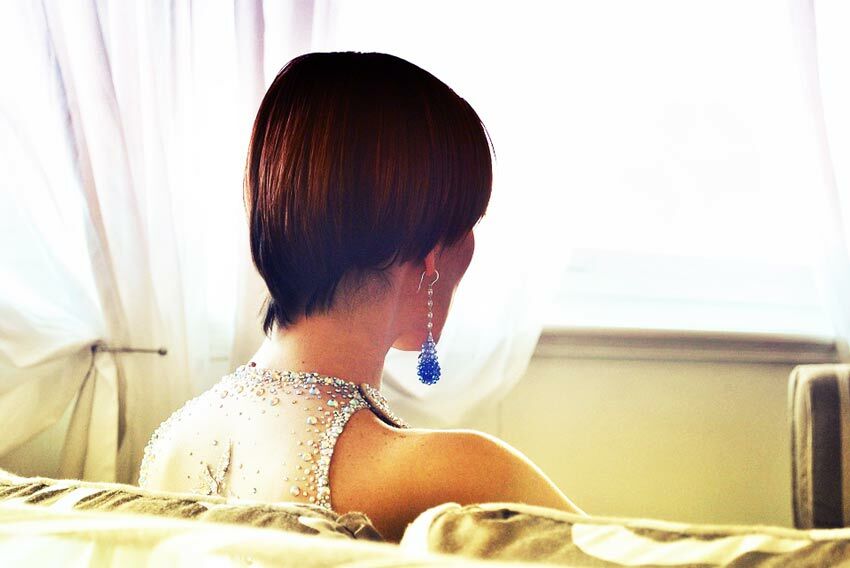 Causes of the disease, usually a few and may depend on the age of the patient. We will highlight the most frequent:
Causes of the disease, usually a few and may depend on the age of the patient. We will highlight the most frequent:
- violation of calcium-phosphorus metabolism of any etiology;
- various traumatic back injuries;
- is not a balanced load on the spine( hypodynamia, or vice versa, the effect of increased load);
- diseases of the cardiovascular system;
- congenital malformation of the spine;
- change of posture, including the scoliotic type;
- circulatory disorders, leading to a deterioration in the supply of the intervertebral disc;
- age-related dystrophic disorders of bone tissue.
In the adolescent period, the main causes of the development of the disease are injuries, unbalanced physical activity( training process).In elderly patients, the main reason is a long-term habitual position during labor activity, a violation of the hormonal background.
Additional predisposing factors of the disease development may be:
-
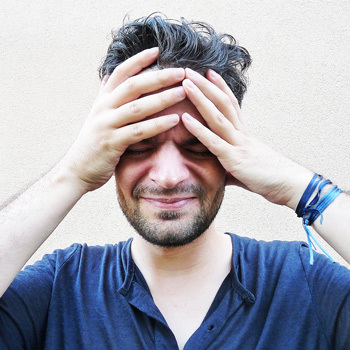 heredity;
heredity; - subcooling;
- poor or incompletely treated exacerbation of osteochondrosis;
- stressful situations and overwork.
Osteochondrosis develops gradually. A person doing sports all the time can not guess that he is susceptible to this disease.
Most of all, this condition occurs in people older than 25 years. Osteochondrosis of the cervical spine is characterized by the fact that the process develops from the upper divisions. However, if you do not receive medical care, gradually the process may affect the lower segments of the spine.
Symptoms of osteochondrosis of the cervical spine in adults and children
Because the disease develops over the years, in many cases the process passes asymptomatically. Sometimes it happens that accidentally on the radiographic images you can determine the initial signs of the disease, with active complaints will be absent. We must remember that the older the patient, the more different complaints he will make.

The main complaints for cervical osteochondrosis are:
- frequent headache and dizziness;
- numbness in the fingertips and weakness in the hands;
- vegetative manifestations;
- increased blood pressure;
- discomfort during movements in the neck;
- persistent aching or burning pain along the spine;
- frequent myositis of neck muscles;
- changes of posture;
- restrictions in the movements of the head;
- may further develop a forced position of the head;
- tinnitus;
- meteorological dependence;
- crunching in the neck while performing movements;
- sleep disturbance.
 These are the most frequently reported symptoms that a patient can present. Unfortunately, the process can begin to develop from his youth, and adolescents will make similar complaints.
These are the most frequently reported symptoms that a patient can present. Unfortunately, the process can begin to develop from his youth, and adolescents will make similar complaints.
Most often, these symptoms manifest themselves together. Osteochondrosis of the cervical spine proceeds with episodes of exacerbation and remission. It is caused by the impact on the body of provoking factors. We must not forget that if such a diagnosis is made, restorative therapy and rehabilitation should be done every six months to avoid an acute period.
Given that the main cause of the development of the disease is a decrease in intervertebral disc trophism, and the lack of adequate therapy, the process may result in the formation of an intervertebral hernia.
Complaints and clinical picture of the disease - photo
 Vascular manifestations in the form of dizziness or headache are intensified when performing elementary motor tasks( head inclinations or turns).In the aggregate of all complaints, the patient tries to additionally take a compulsory position, to reduce the symptoms, which worsens the nutrition of the intervertebral disc.
Vascular manifestations in the form of dizziness or headache are intensified when performing elementary motor tasks( head inclinations or turns).In the aggregate of all complaints, the patient tries to additionally take a compulsory position, to reduce the symptoms, which worsens the nutrition of the intervertebral disc.
These are the complaints most often and encourage the patient to see a doctor. If you do not carry out treatment, complaints will be strengthened and have a more persistent character, that is, they will not pass independently.
Pain in cervical osteochondrosis, as a rule, permanent, aching, burning character. The disease can be accompanied by periodic "lumbago", which are provoked by sharp movements.
Increased blood pressure on the background of an osteochondrosis prompts the patient to be examined by a therapist. If the timely treatment is not carried out, increased blood pressure will be constant, which contributes to the development of secondary hypertension. In these situations, a correctly collected history is of great importance.
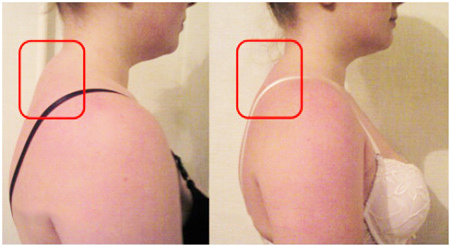
When the process is localized in the cervical region, unpleasant sensations spread along the back surface of the neck, the constant tension of the musculoskeletal system helps to limit movements and form the forced position of the head.
Pain in cervical osteochondrosis is accompanied by a sensitivity disorder. Because of the constant discomfort, a muscular roller gradually forms, in the shoulder region, palpation, the patient experiences unpleasant sensations in this area.
In addition to constant discomfort, the patient may experience sharp, shooting pain in the neck. The occurrence of such complaints indicates that the patient should be given complete rest to reduce pain. In some cases, the pain is so severe that a person can not perform the simplest actions( turn his head, breathe deeply, straighten his back).In all cases, the patient should examine the doctor, and confirm the diagnosis of osteochondrosis.
Changing the hormonal background, also play a significant role in the development of the disease of the cervical spine. Therefore, competently matched physical load, will reduce general clinical symptoms and facilitate the patient's condition. Due to the fact that the pain in the neck worries constantly, a secondary disturbance of sleep occurs. It is difficult for a person to take a comfortable position in bed, he worries, which leads to psycho-emotional stress.
In addition, the patient pays attention to the violation of sensitivity. They describe them as "shivers" that are felt at the fingertips. In some cases, unpleasant sensations can be localized throughout the entire arm, reducing muscle strength.
Diagnosis of the disease
It is quite difficult to diagnose on the basis of a single examination. Basically, the following measures are carried out to clarify the diagnosis: 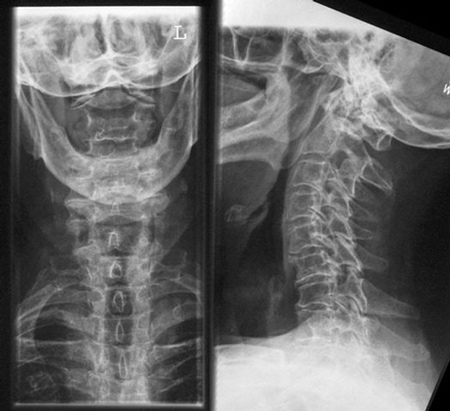
- a thorough collection of complaints;
- consultations of specialized specialists( cardiologist, endocrinologist, neurologist);
- X-ray examination of the cervical spine;
- magnetic resonance imaging.
Inspections of specialized doctors are necessary to exclude acute conditions of the cardiological profile and others. With the exception of acute somatic pathology, one can speak of a diagnosis of osteochondrosis. In addition to general clinical manifestations, the diagnosis can be confirmed by radiological examination of the spine.
X-ray is the most accessible and easy-to-conduct study that helps in diagnosing diagnosis. In the picture, one can see the narrowing of the space between the vertebrae, which indicates the degeneration of the intervertebral disc. At the edges of the vertebrae, it is possible to distinguish between bony outgrowths. If osteochondrosis is complicated by instability in the cervical region, then the x-ray can be noted displacement of the vertebrae relative to each other.
Osteochondrosis of the cervical spine is a disease that can radically show which area is damaged most. Even when examining one cervical segment, you can see that the process is not distributed evenly.
In especially difficult cases, magnetic resonance imaging is performed, which helps to diagnose the complication of osteochondrosis - intervertebral hernia. Thanks to the layered image, MRI allows you to determine even the most minimal hernial changes and immediately indicate the level of lesion.
Treatment of osteochondrosis of the cervical spine
How to treat cervical osteochondrosis in an acute and interictal period is known only by a doctor. The therapy that is prescribed in this condition should be comprehensive. When the disease worsens, it includes:
-
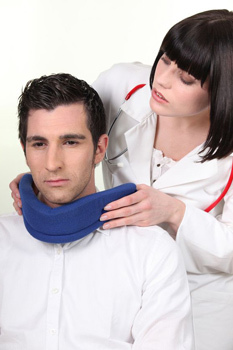 medications;
medications; - complex restorative therapy( physiotherapy exercises, gymnastics, massage, acupuncture, manual therapy);
- physiotherapy( electrophoresis, UHF, magnetotherapy, laser therapy);
- To prevent exacerbation of osteochondrosis resort:
- sanatorium treatment;
- folk medicine;
- wearing special braces and corsets;
- lifestyle change( weight loss, balanced physical activity).
Drugs for the treatment of osteochondrosis of the cervical spine are as follows:
- anti-inflammatory drugs;
- drugs that improve blood circulation;
- vitamin complexes;
- for acute analgesic situations;
- means that reduce muscle tension.
In addition to pills and injections, creams, ointments and gels that are applied to the affected area are actively prescribed. Their effect, they contribute to skin irritation in a certain area, which improves blood circulation in small vessels, thereby ensuring the delivery of nutrients to the damaged segments, and reducing muscle tension.
After an acute period, physiotherapy, massage and physiotherapy are prescribed. Restorative therapy is in addition to the main drug treatment. As the condition improves, nutrition and trophism of the intervertebral disc will also be better.
 Against the background of treatment, the patient will celebrate improvement of well-being, increase of working capacity and mood. If the treatment is stopped, not leading up to the end, then exacerbations of osteochondrosis will pass quite often.
Against the background of treatment, the patient will celebrate improvement of well-being, increase of working capacity and mood. If the treatment is stopped, not leading up to the end, then exacerbations of osteochondrosis will pass quite often.
How to treat cervical osteochondrosis in the recovery period will tell the doctor rehabilitologist. Before talking about a complex of restorative therapy, it should be noted that any treatment should be accompanied by a correction of sleeping supplies. These include orthopedic mattresses and pillows.
 Specialists also additionally recommend wearing the collar of Shantz permanently or for a certain period of time. This method is especially widely used in children's practice, when patients dress it for the period of homework. The collar of the trench is selected individually in orthopedic salons.
Specialists also additionally recommend wearing the collar of Shantz permanently or for a certain period of time. This method is especially widely used in children's practice, when patients dress it for the period of homework. The collar of the trench is selected individually in orthopedic salons.
Orthopedic pillow for cervical osteochondrosis is selected for each patient. It should fit the size of the bed and be selected depending on the constitution of the patient. It should not be very small or very large, the main guideline is the width of the shoulders of a person.
The cushion for prolonged sleep and rest should be medium hardness and in shape resemble a square or rectangle. Pillows of other shapes are suitable for not long rest. Depending on the activity of the degenerative process, the orthopedic pillow for cervical osteochondrosis should change.
Exercises and gymnastics( Лфк)
Restorative therapy should include gymnastics. The main goal of the exercises is to strengthen the muscles of the neck and back, the upper shoulder girdle, improve the mobility of the spine, eliminate muscle clamps. In addition, exercises with cervical osteochondrosis affect deeply located muscles.
 As a result of the gymnastics with cervical osteochondrosis, physiological curves are gradually restored, and the load on the intervertebral discs decreases. We must not forget that exercises for cervical osteochondrosis should also capture thoracic segments as well.
As a result of the gymnastics with cervical osteochondrosis, physiological curves are gradually restored, and the load on the intervertebral discs decreases. We must not forget that exercises for cervical osteochondrosis should also capture thoracic segments as well.
Gymnastics for cervical osteochondrosis should be conducted with an instructor. It helps patients to understand which zones need to be given greater emphasis. Load and volume of tasks are selected individually, and this depends:
- on the patient's age;
- from the prevalence of the process;
- from the presence of additional co-morbidities;
- on the effectiveness of drug therapy.
First, simple and not difficult tasks are performed, as the body begins to adapt to new conditions, and the muscles perform their work in sufficient volume, the exercises complicate, and the duration of employment increases.
LFK for cervical osteochondrosis includes simple actions. This is the inclination of the head back and forth, gradually adding circular motions to the head. It should be borne in mind that even for the conduct of exercise therapy there can be contraindications. Typically, the complex of one lesson includes tasks that are aimed at developing and influencing all segments of the spine.
After exercises in the cervical area, gradually add tasks to improve the performance of the thoracic and lumbar spine. Therapeutic exercises for cervical osteochondrosis can be performed in a standing or sitting position. Tasks are conducted in a sedate manner, at a small pace, this will additionally carry out respiratory gymnastics.
Contraindications to physiotherapy:
- acute pain syndrome;
- increase in blood pressure and the presence of cardiac pathology in the acute phase;
- disorders of coordination and disease of the vestibular apparatus;
- temperature increase;
- exacerbation of other chronic pathology;
- condition after surgical treatment.
Technique of Bubnovsky
This method is based on a phased restoration of normal activity of the musculoskeletal system. Gymnastic exercises, which are performed on a specialized simulator, allow you to gradually restore the work of the structures of the cervical spine.
First the pain is removed, then the blood circulation is restored, the muscle tension is removed and exercises are held to expand the motor activity in the cervical region. Bubnovsky's method is additionally supported by massage courses, classes in the pool.
Massage for osteochondrosis of the cervical spine
In addition to general restorative exercises, a very good effect is provided by a massage. Massage with cervical osteochondrosis can be used different( classical, segmental, point).In some cases, a combination of different techniques is allowed in one session.
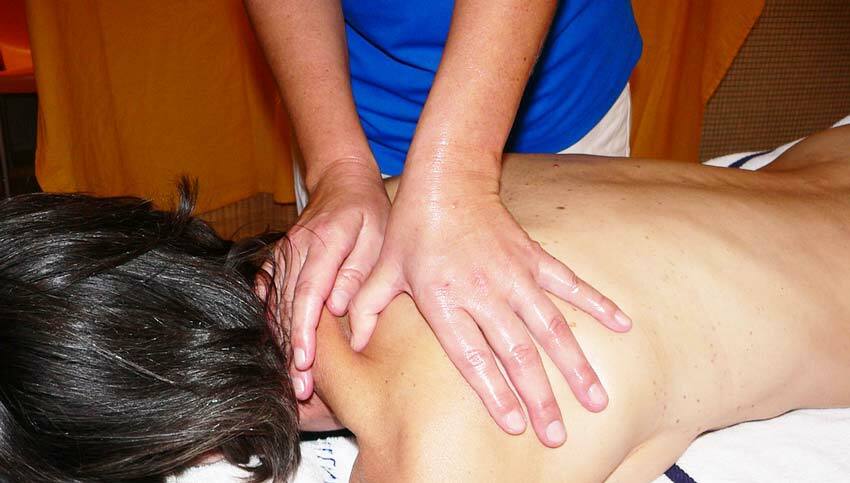
We must not forget that massage with cervical osteochondrosis is carried out on a hard surface, face down and its duration can vary from ten sessions and more. The repetition rate is also determined by the attending physician. The effectiveness of the massage will last longer if the patient sleeps on a properly matched pillow.
Physiotherapy procedures like a magnet or electrophoresis, have a local irritant effect. Magnetotherapy is a painless procedure that is well tolerated by both adults and children. Manipulation lasts for several minutes, the patient must lie still, so it is more often recommended for patients of older age.
Electrophoresis is a manipulation that is performed using a special device. During the procedure, the patient feels a slight tingling, which is created by currents. The frequency and impulsivity of the signal for each age is different. With the help of this technique, the administration of a drug substance is carried out, which has a positive effect. This manipulation is more aggressive, in comparison with magnetotherapy, therefore for its carrying out there should be strict indications.
 Balanced nutrition is very important in this disease. Patients are recommended to eat fruits, vegetables, meat, greens, fish. It should limit the consumption of salt and all possible spices, seasonings, smoked or fried foods, sugar. To drink is better vegetative broths and teas, it is desirable to avoid the use of coffee and alcohol.
Balanced nutrition is very important in this disease. Patients are recommended to eat fruits, vegetables, meat, greens, fish. It should limit the consumption of salt and all possible spices, seasonings, smoked or fried foods, sugar. To drink is better vegetative broths and teas, it is desirable to avoid the use of coffee and alcohol.
The use of traditional medicine is aimed at reducing pain syndrome. The most commonly used are compresses and mixtures that are superimposed on the affected area. Success in the treatment of osteochondrosis of the cervical spine depends largely on the patient's consciousness. It is not necessary to throw the started classes and therapy, once felt better. It is not rational to constantly use painkillers that bring temporary relief, but the disease itself is not treated.



